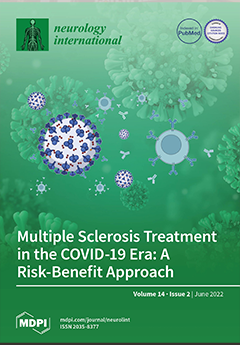Neurol. Int., Volume 14, Issue 2 (June 2022) – 19 articles
In MS patients, risk factors for severe evolution of COVID-19 are older age, male gender, an EDSS score of >3, comorbidities, methylprednisolone administered in the month before infection, anti-CD20 therapy, and progressive MS course. A reduced vaccine humoral response has been described in patients on ocrelizumab and fingolimod, and a low antibody titer has been associated with the risk of SARS-CoV-2 breakthrough infection.
We suggest evaluating single patient risk factors for COVID-19 severe evolution and anti-SARS-CoV-2 antibodies titer in order to better identify those MS persons at risk of developing severe COVID-19 and to discuss with them the opportunity to administer a prophylactic therapy (i.e., tixagevimag/cilgavimab) or to treat SARS-CoV-2 infection with antivirals and/or anti-spike protein monoclonal antibodies. View this paper
- Issues are regarded as officially published after their release is announced to the table of contents alert mailing list.
- You may sign up for e-mail alerts to receive table of contents of newly released issues.
- PDF is the official format for papers published in both, html and pdf forms. To view the papers in pdf format, click on the "PDF Full-text" link, and use the free Adobe Reader to open them.






